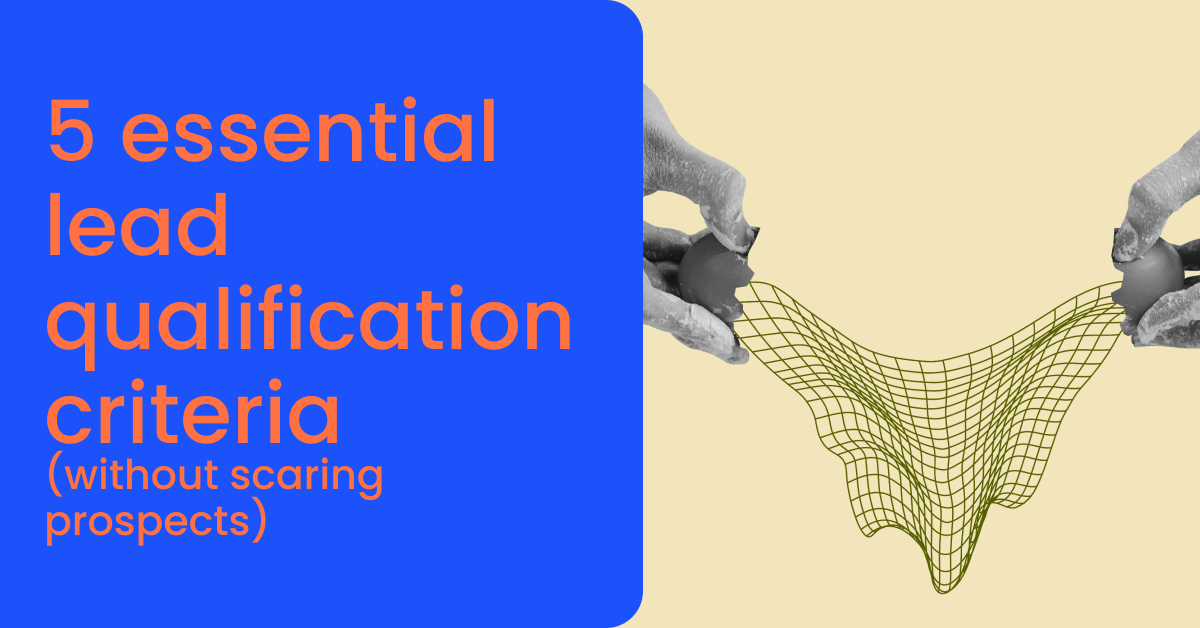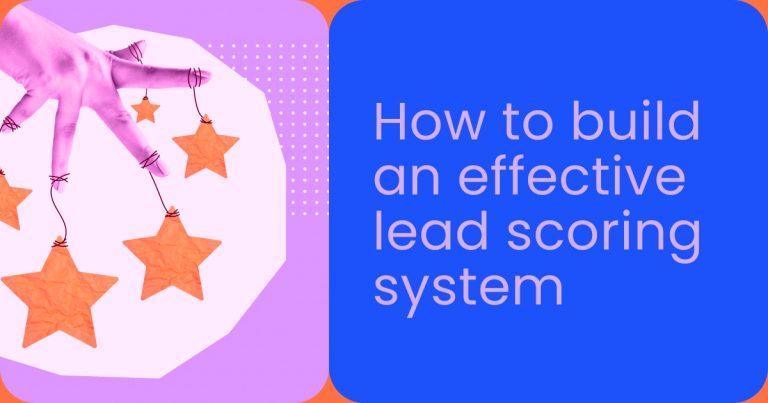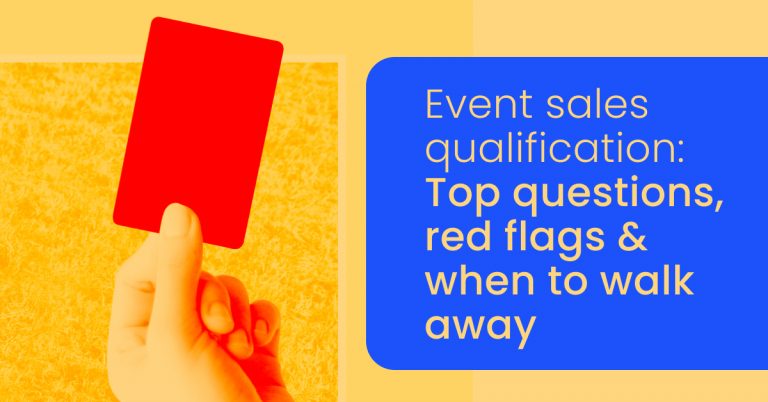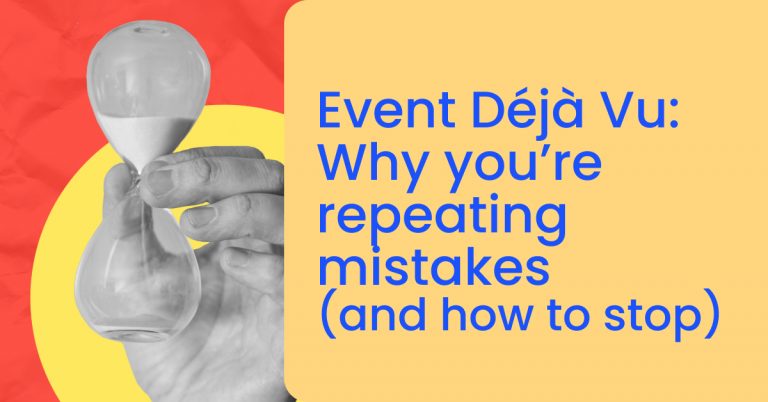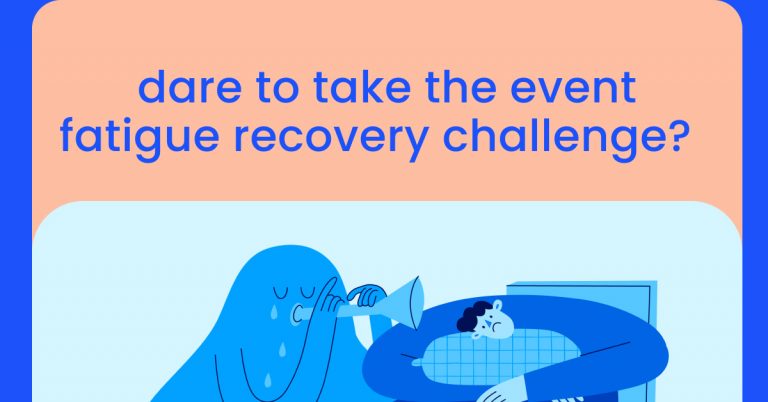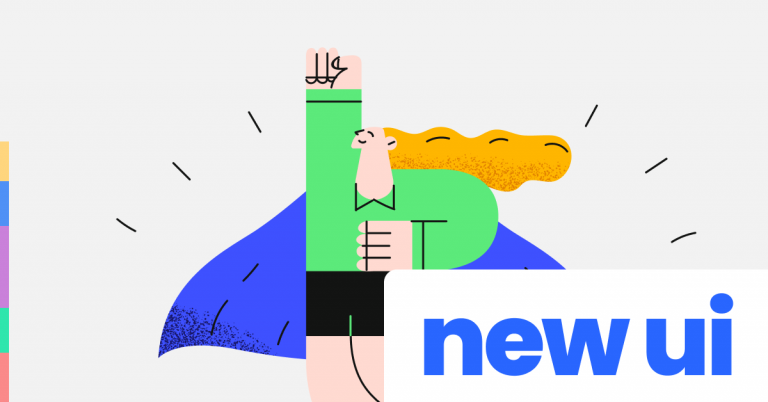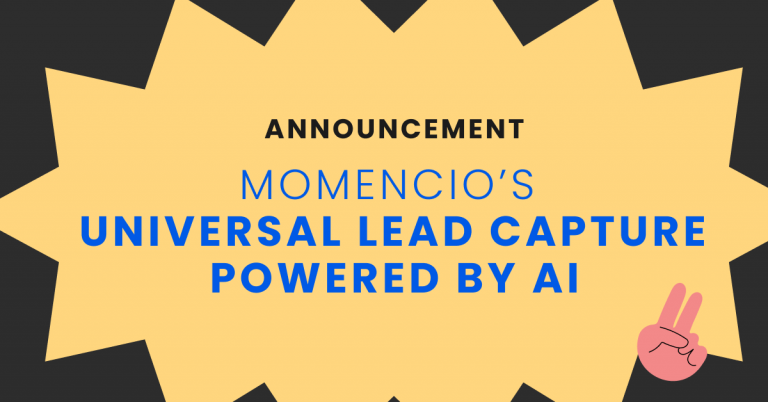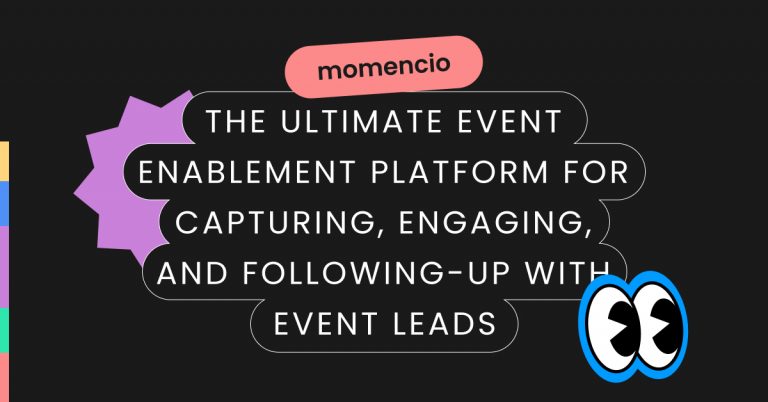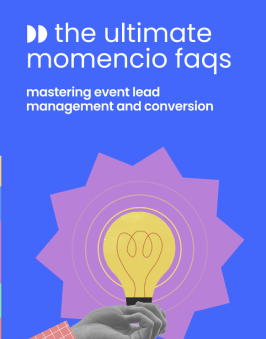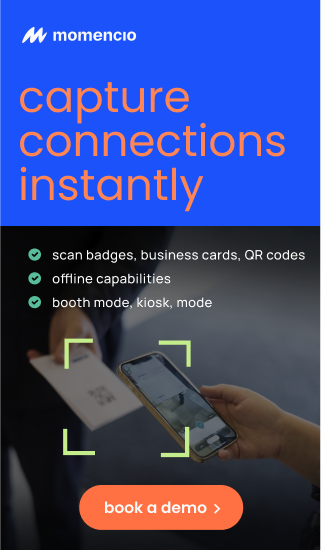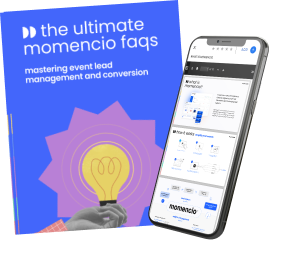You’ve been there. Standing at your booth, surrounded by a sea of potential clients. The energy is high, conversations are flowing, but as the event wraps up, you find yourself with a stack of business cards and a nagging question: Which of these contacts are truly worth pursuing?
It’s a common scenario. Many sales reps collect leads at events, only to struggle later with identifying genuine prospects. Without a clear strategy for qualifying these leads on the spot, time gets wasted on dead ends while real opportunities slip away.
So, how do you filter through the crowd and focus on the people who actually matter? It comes down to mastering five essential lead qualification criteria. These criteria help you assess a prospect’s potential in real time—without making the conversation feel like an interrogation.
In the following sections, we’ll break down these five criteria, giving you practical ways to apply them at your next trade show or business event. Whether you’re a seasoned sales professional or new to event prospecting, these insights will help you make every interaction count.
1. Gauge initial interest
Not every person who stops by your booth is a potential customer. Some are just curious, others are collecting freebies, and a few might not even realize what your company does. The first step in lead qualification is identifying who is actually interested versus who is just passing through.
A simple way to do this? Pay attention to body language and ask an open-ended question that forces engagement. Instead of, “Can I help you?”—which is easy to dismiss—try, “What brought you to the event today?” or “Are you familiar with [your industry/product]?” These questions invite conversation and give you immediate insight into whether the person has a real need for what you offer.
The key here is to listen. If they respond with vague or non-committal answers, they may not be a qualified lead. But if they start asking specific questions about your product, mention a challenge they’re facing, or express genuine curiosity, that’s your cue to go deeper.
Another strong indicator of interest is how much time they spend at your booth. Someone who lingers, asks follow-up questions, or engages in back-and-forth conversation is showing natural buying signals. On the other hand, someone who grabs a brochure and keeps walking is probably not worth pursuing further.
One of the most popular and effective ways to gauge initial interest is by integrating gamification and interactive experiences into your booth experience. Instead of waiting for attendees to start a conversation, use interactive quizzes, spin-to-win games, or digital challenges that require them to engage. For example, a short quiz about their business needs can be both fun and revealing—giving you immediate insight into whether they align with your ideal customer profile. Attendees who participate in these activities are more likely to have genuine curiosity, making it easier to transition into a qualifying conversation.
The goal of this stage isn’t to sell—it’s to sort. You’re not trying to convince anyone yet. You’re simply determining if there’s enough initial interest to continue the conversation. If there is, you move to the next qualification step. If not, thank them for stopping by and shift your attention to the next person
2. Identify a real need
Interest alone doesn’t make someone a qualified lead. Just because they stop, chat, and nod along doesn’t mean they actually need what you’re offering. The next step in lead qualification is figuring out if they have a real problem that your product or service can solve.
Most sales reps make the mistake of jumping straight into a pitch. Instead, you need to ask the right questions to uncover pain points. The best way to do this is with a question that gets them talking about their challenges. Try:
“What’s the biggest challenge you’re facing when it comes to [your industry]?”
This question shifts the focus from you to them. It forces them to think and respond with something meaningful. If they shrug or say, “I’m just looking,” they probably don’t have a pressing need. But if they start explaining a specific issue, you’ve just uncovered a problem that needs solving.
Once you have a challenge on the table, dig deeper. Ask follow-up questions like:
“How long has this been an issue for you?”
“What solutions have you tried before?”
“What would solving this problem mean for your business?”
These questions help you gauge how serious they are. A casual frustration is different from a pain point that’s costing them time, money, or lost opportunities. If the problem is significant and unresolved, they’re a much stronger lead.
If they don’t have a clear challenge—or their issue doesn’t align with what you offer—don’t force it. A bad fit today doesn’t mean a bad fit forever. Simply thank them, offer a useful resource, and move on. The best salespeople know when to disqualify leads just as confidently as they qualify them.
3. Understand decision-making power
A great conversation with the wrong person is still a dead end. You need to know if the person in front of you has the authority to make buying decisions or if they’re just gathering information for someone else.
Most sales reps hesitate to ask directly, fearing they’ll come off as rude or pushy. But qualifying decision-making power doesn’t have to be awkward—it just requires the right phrasing. Instead of bluntly asking, “Are you the decision-maker?”, try:
“How does your team typically make decisions when it comes to [your solution]?”
This opens the door for them to explain the process without feeling put on the spot. Their response will tell you everything you need to know. If they say something like, “Well, I’d need to take this back to my manager,” you immediately know they aren’t the final decision-maker. But if they say, “I’m looking for a solution we can implement next quarter,” that’s a strong buying signal.
If they aren’t the decision-maker, don’t dismiss them. Instead, pivot. Ask:
“What’s the best way for us to get in front of the right person?”
“Would it be helpful if I sent a summary for you to share with your team?”
Some of the best sales opportunities come from building relationships with influencers—people who don’t sign the contract but strongly influence the final decision. Treat these conversations with the same level of importance, and you’ll set yourself up for success when it’s time to connect with the real buyer.
However, if the person in front of you is the actual decision-maker, you can shift gears. Now, it’s time to qualify their timeline and budget.
4. Assess timeline and urgency
A lead might be interested and have a real need, but if they’re not ready to buy soon, they may not be a priority. At an event, you need to determine how quickly a prospect intends to take action so you can focus on those who are ready to move forward.
Instead of asking, “When do you plan to buy?”—which can feel aggressive—try:
“What’s your timeline for finding a solution to this challenge?”
This makes the conversation feel natural rather than sales-driven. If they respond with, “We’re looking to implement something in the next few months,” that’s a strong sign they’re worth pursuing. If they say, “We’re just exploring options for next year,” they may still be valuable, but they aren’t an immediate priority.
Another effective way to gauge urgency is by asking:
“What happens if this problem isn’t solved soon?”
If they say, “It’s not a huge issue right now,” they likely don’t have a pressing need. But if they say, “We’re losing customers because of this,” or “It’s costing us too much time and money,” that’s a high-priority lead.
Not every lead at an event will be ready to buy today, and that’s okay. The key is identifying which ones need follow-up immediately and which ones should be nurtured over time. By understanding their timeline, you can tailor your follow-up strategy and avoid wasting effort on leads that aren’t ready.
If the lead is urgent, move to the final qualification step: budget. If they’re not, shift the conversation toward long-term relationship building rather than an immediate sale.
5. Confirm budget and fit
Even if a prospect has interest, a real need, decision-making power, and urgency, there’s still one last qualification step—budget. If they can’t afford your solution, the deal isn’t going anywhere.
Most sales reps hesitate to bring up money at events, fearing it will kill the conversation. But avoiding the topic only leads to wasted follow-ups with prospects who were never financially viable to begin with. The key is to approach budget discussions casually and strategically. Instead of bluntly asking, “What’s your budget?”, try:
“Many of our clients in your space typically invest between [$X and $Y] to solve this challenge. Does that align with what you were expecting?”
This gives them a frame of reference while making it easier for them to answer honestly. If they say, “That’s within our range,” you know they’re a serious prospect. If they say, “That’s more than we were thinking,” you can explore whether a scaled-down version of your solution might work for them.
Another way to approach it is:
“Are you currently investing in a solution like this, or is this a new initiative?”
If they’re already spending money on a similar service, it means they have a budget—it’s just a matter of whether they see enough value in switching to you. If this is a new investment for them, you may need to help them justify the cost internally.
If a prospect meets all five qualification criteria—interest, need, decision-making power, urgency, and budget—they are a high-priority lead worth pursuing immediately. If they fall short in one or two areas, they may still be valuable but require a different follow-up approach.
At this point, it’s time to transition from qualifying to next steps. Instead of saying, “I’ll follow up,” be specific:
“Would it make sense to schedule a quick call next week to go over how we can get this moving?”
The more concrete the next step, the more likely the lead will stay engaged after the event.
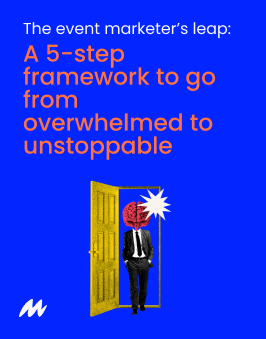
Event lead qualification checklist
Before leaving an event with a list of leads, use this simple checklist to ensure you’re focusing on the right prospects:
-
Initial interest
☐ Did the prospect actively engage in the conversation rather than just collecting freebies? ☐ Did they ask thoughtful questions about your product or service? ☐ Did they express any curiosity about how your solution works?
-
Real need
☐ Did they mention a specific challenge or problem they are facing? ☐ Did they seem genuinely interested in solving that problem? ☐ Did they express frustration with their current solution (or lack of one)?
-
Decision-making power
☐ Did you ask how their company typically makes buying decisions? ☐ Did they confirm they are a key decision-maker or influence the buying process? ☐ If they aren’t the final decision-maker, did they provide a path to connect with the right person?
-
Timeline and urgency
☐ Did they indicate when they plan to implement a solution? ☐ Did they express urgency in solving the problem soon? ☐ Did they acknowledge the consequences of not addressing the issue?
-
Budget and fit
☐ Did they confirm they have a budget for a solution like yours? ☐ Did their expectations align with your pricing range? ☐ If their budget was lower, did they show interest in a scaled-down version?
Next steps
☐ Did you set a clear, concrete next step before ending the conversation?
☐ Did you confirm their preferred method of follow-up (email, call, meeting)?
☐ Did you take notes on any personal details that could help build rapport later?
Using this checklist at events ensures that your follow-ups are focused on the most qualified leads, increasing your chances of closing deals post-event.
Conclusion
Most sales reps leave events with a long list of leads but little clarity on who is actually worth pursuing. The problem isn’t generating contacts—it’s qualifying them in real time so that follow-ups aren’t wasted on the wrong people.
By focusing on five essential criteria—gauging initial interest, identifying a real need, understanding decision-making power, assessing timeline and urgency, and confirming budget—you can separate real opportunities from casual conversations. This allows you to prioritize high-value prospects, nurture long-term leads effectively, and avoid wasting time on people who were never going to buy.
Effective lead qualification at events isn’t about aggressive selling. It’s about having smart, engaging conversations that naturally reveal whether a prospect is a good fit. The best sales reps don’t just collect business cards—they leave events knowing exactly which prospects are serious, what their challenges are, and what the next steps should be.
That’s where momencio makes a difference. With its intelligent lead capture and real-time qualification tools, momencio helps you instantly identify high-value prospects, track interactions, and streamline follow-ups—so you never miss an opportunity.
Ready to turn more event leads into sales? Book a demo with momencio today.
FAQs
- How do you qualify leads quickly at an event without making it feel like an interrogation?
- The key is to ask open-ended questions that spark conversation rather than making prospects feel like they’re being grilled. instead of asking, “are you the decision-maker?”, try “how does your team usually evaluate solutions like this?” natural conversations will reveal the information you need without putting prospects on the defensive.
- What’s the biggest mistake sales reps make when qualifying leads at events?
- Many reps either qualify too aggressively—turning potential buyers off—or they qualify too loosely, wasting time on unqualified leads. the best approach is to balance engagement with efficiency: ask the right questions, listen carefully, and move on if the fit isn’t there.
- What should I do if a lead is interested but doesn’t have the budget right now?
- If they meet all other criteria, don’t write them off. instead, position yourself as a long-term resource. offer helpful content, stay in touch, and follow up when budget cycles reset. some of your best deals will come from leads you nurtured over time.
- How do I follow up effectively after the event?
- Send a personalized follow-up within 24-48 hours. reference your conversation, restate their challenge, and outline the next steps. make it clear why continuing the discussion benefits them, not just you.
- How do I handle leads who say they need to check with their team before making a decision?
- Ask them what kind of information would help their team make a decision. offer to send a summary, schedule a follow-up call, or even present directly to the decision-makers. positioning yourself as a problem-solver rather than just another salesperson keeps the conversation moving forward.
Interesting facts from research
- Gamification can boost employee engagement by up to 48%.
- 68% of B2B marketers believe that live events generate the most leads.
- 85% of exhibitors state that their primary goal at trade shows is to generate leads.
